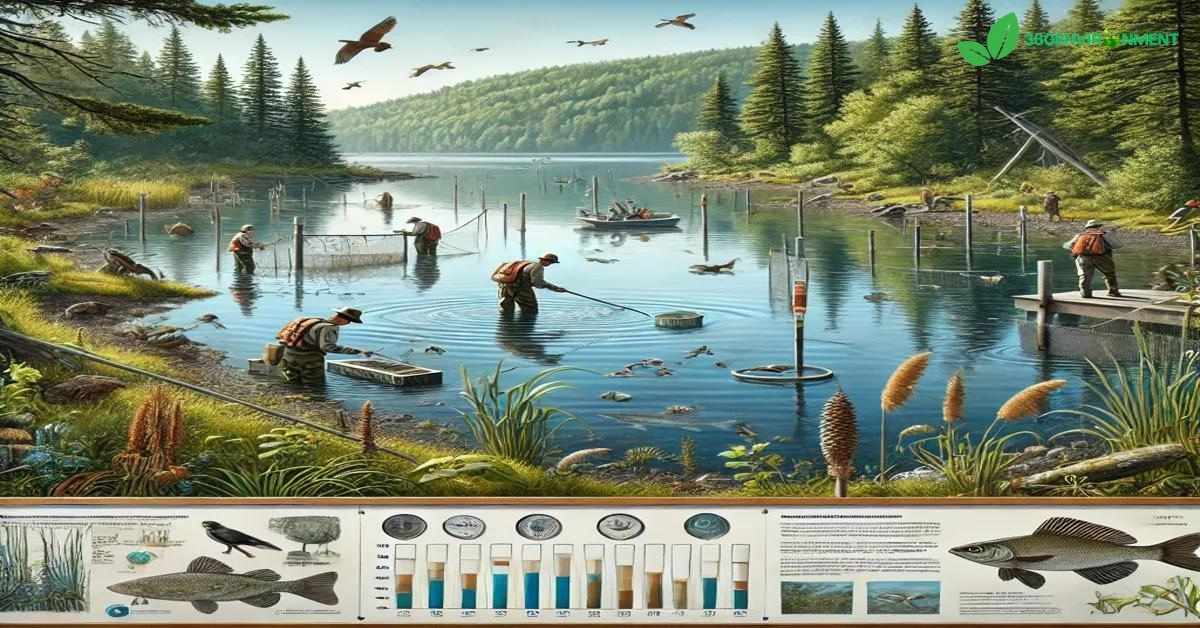Introduction
Porcupine Reservoir, located in the picturesque landscapes of northern Utah, is a vital water body renowned for its ecological importance, recreational opportunities, and scenic beauty. Nestled at the foot of the Wasatch Mountains, the reservoir is fed by the Bear River and serves as a critical water source for the surrounding ecosystems and communities. The reservoir not only supports diverse wildlife but also provides ample recreational opportunities for fishing, boating, hiking, and wildlife observation.
This article aims to explore the ecological significance of Porcupine Reservoir, examining its formation, biodiversity, water quality, the challenges it faces from human activities and climate change, and ongoing conservation initiatives. By understanding these aspects, we can foster a greater appreciation for Porcupine Reservoir and its importance in supporting regional ecosystems and communities.
1. Geographic and Ecological Overview of Porcupine Reservoir
Porcupine Reservoir is characterized by its stunning geographical features and diverse ecosystems. Understanding the geography and ecology of the reservoir is essential for appreciating its natural beauty and significance.
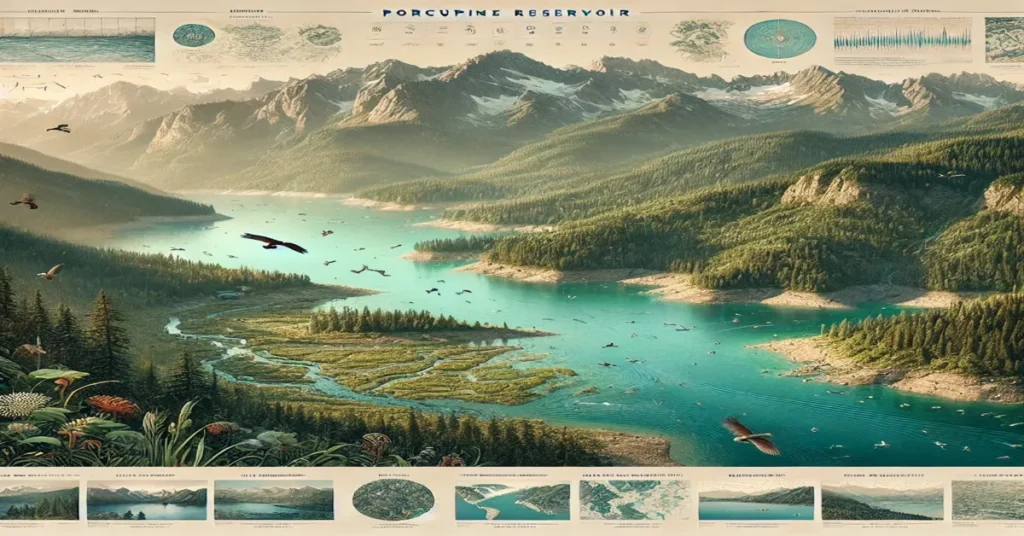
1.1. Geographic Features
- Location: Porcupine Reservoir is situated in Cache County, Utah, approximately 10 miles east of the city of Logan. The reservoir is accessible via scenic highways and forest roads, making it a popular destination for outdoor enthusiasts.
- Size and Depth: The reservoir covers an area of about 1,400 acres and has a maximum depth of approximately 70 feet. Its size and depth make it an ideal habitat for various aquatic species.
- Elevation and Climate: Porcupine Reservoir is located at an elevation of about 5,200 feet, resulting in a unique climate characterized by warm summers and cold winters. This elevation influences the types of flora and fauna found in the area and contributes to the overall ecological balance.
1.2. Ecological Characteristics
The ecological characteristics of Porcupine Reservoir contribute to its biodiversity and overall health.
- Water Source: The reservoir is primarily fed by the Bear River, along with several smaller tributaries. This consistent water source helps maintain the reservoir’s water levels and quality.
- Surrounding Ecosystems: Porcupine Reservoir is surrounded by diverse ecosystems, including forests, meadows, and wetlands. These habitats support a wide range of wildlife and plant species, contributing to the region’s rich biodiversity.
2. Biodiversity in Porcupine Reservoir
Porcupine Reservoir is home to a diverse array of flora and fauna, making it an important ecological area. Understanding the biodiversity present in the reservoir is key to appreciating its significance.
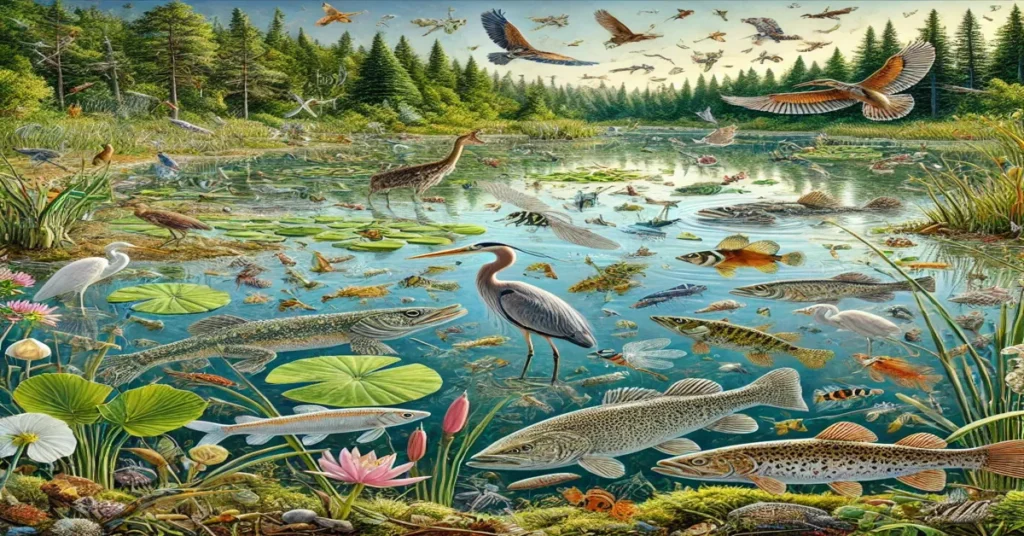
2.1. Aquatic Life
The aquatic ecosystems of Porcupine Reservoir are diverse, supporting numerous species of fish, invertebrates, and aquatic plants.
- Fish Species: The reservoir is well-known for its fishing opportunities, particularly for species such as rainbow trout, brook trout, and cutthroat trout. These fish not only provide recreational opportunities for anglers but also play a vital role in the lake’s food web.
- Aquatic Invertebrates: The reservoir’s ecosystem includes various aquatic invertebrates, such as insects, crustaceans, and mollusks, which are crucial for nutrient cycling and serve as food for fish and other wildlife.
2.2. Terrestrial Flora and Fauna
The diverse habitats surrounding Porcupine Reservoir are home to a wide range of plant and animal species.
- Vegetation: The forests surrounding the reservoir are dominated by species such as ponderosa pine, aspen, and fir. These trees provide essential habitat for numerous bird and mammal species, contributing to the overall health of the ecosystem.
- Wildlife: Porcupine Reservoir and its surrounding areas support a variety of wildlife, including deer, elk, moose, and small mammals like rabbits and squirrels. The diverse habitats provide essential food sources and shelter for these animals.
2.3. Birdlife
Porcupine Reservoir is a critical habitat for various bird species, making it a popular destination for birdwatchers.
- Migratory Birds: The reservoir provides essential nesting and feeding grounds for migratory birds, including ducks, geese, and shorebirds. The presence of wetlands and aquatic vegetation enhances the reservoir’s value as a habitat for these species.
- Raptors and Songbirds: The surrounding forests and meadows support various raptors, such as hawks and eagles, as well as numerous songbird species. These birds contribute to the ecological balance by participating in pest control and seed dispersal.
3. Ecological Importance of Porcupine Reservoir
Porcupine Reservoir plays a crucial role in maintaining ecological balance and supporting biodiversity in the region. Its significance extends beyond its beauty, providing essential ecosystem services.
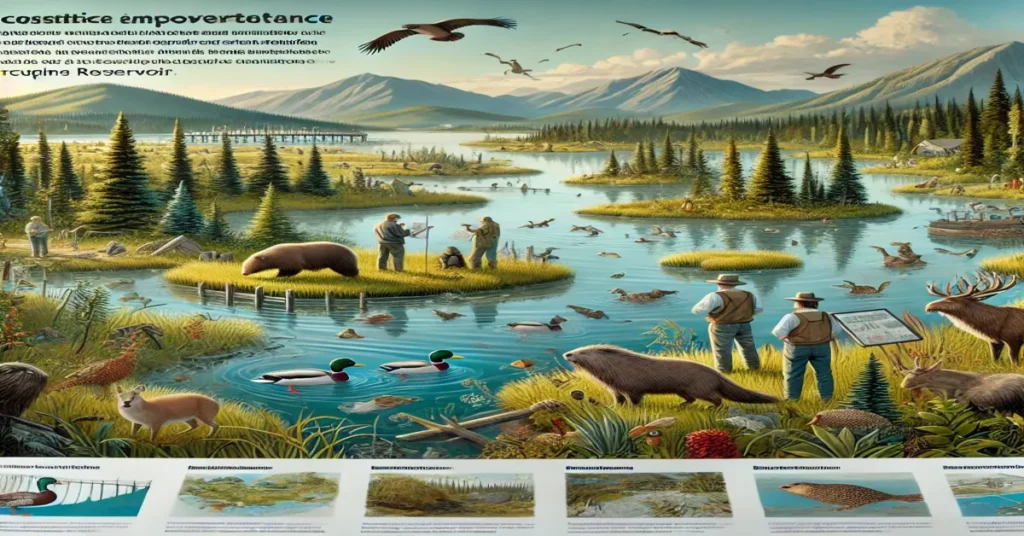
3.1. Water Quality and Filtration
Porcupine Reservoir contributes to water quality and ecosystem health through natural filtration processes.
- Nutrient Cycling: Aquatic plants and microorganisms in the reservoir help cycle nutrients, breaking down organic matter and preventing excessive nutrient buildup that can lead to harmful algal blooms.
- Water Filtration: The sediments and vegetation in Porcupine Reservoir act as natural filters, removing pollutants and sediments from the water. This filtration process is essential for maintaining healthy aquatic ecosystems and ensuring safe water quality.
3.2. Habitat for Wildlife
Porcupine Reservoir serves as a critical habitat for various species, supporting both aquatic and terrestrial life.
- Breeding and Feeding Grounds: The reservoir provides essential breeding and feeding grounds for numerous species, including migratory birds that rely on the area for nesting and feeding during their journeys.
- Biodiversity Support: The diverse ecosystems surrounding Porcupine Reservoir support a rich array of species, contributing to the overall health of the region. Maintaining biodiversity is essential for ecosystem resilience and stability.
3.3. Recreational Opportunities
Porcupine Reservoir offers a range of recreational opportunities that contribute to local economies and promote outdoor activities.
- Fishing and Boating: The reservoir attracts anglers and boaters, providing opportunities for recreation and relaxation. These activities can foster a connection to nature and raise awareness about the importance of conservation.
- Hiking and Wildlife Viewing: The surrounding areas offer hiking trails and wildlife viewing opportunities, allowing visitors to experience the beauty of the region and appreciate its ecological significance.
4. Challenges Facing Porcupine Reservoir
Despite its ecological importance, Porcupine Reservoir faces numerous challenges from human activities, climate change, and pollution. Understanding these challenges is crucial for implementing effective conservation measures.
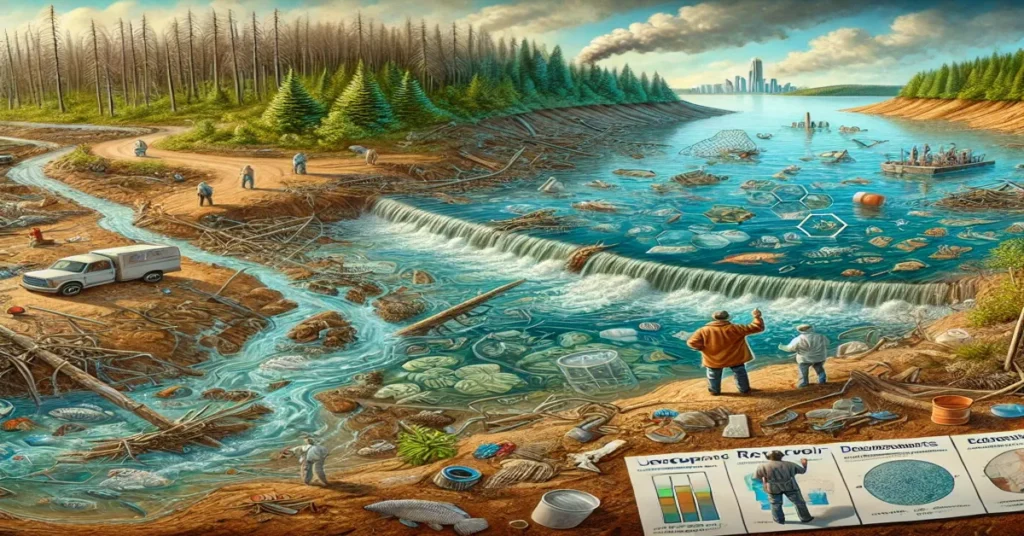
4.1. Water Quality Concerns
Water quality is a significant issue for Porcupine Reservoir, with various factors impacting its health.
- Nutrient Runoff: Agricultural practices, urban development, and landscaping can lead to nutrient runoff, introducing excess nitrogen and phosphorus into the reservoir. This nutrient influx can cause algal blooms, depleting oxygen levels and harming aquatic life.
- Pollutants: Chemical contaminants, such as pesticides and heavy metals, can enter the reservoir through runoff, posing risks to wildlife and disrupting the delicate balance of the ecosystem.
4.2. Habitat Loss and Degradation
Human activities can lead to habitat loss and degradation, threatening the ecological integrity of Porcupine Reservoir.
- Development Pressure: Urbanization, agriculture, and industrial development around Porcupine Reservoir can lead to habitat fragmentation and destruction. The conversion of natural landscapes into developed areas reduces the available habitat for wildlife.
- Wetland Drainage: Wetlands surrounding Porcupine Reservoir are often drained for agricultural use or development, leading to the loss of critical habitat and ecosystem services.
4.3. Climate Change
Climate change poses a growing threat to Porcupine Reservoir, impacting water levels, temperatures, and the timing of seasonal events.
- Altered Hydrology: Changes in precipitation patterns and increased evaporation rates can lead to fluctuating water levels in the reservoir. This variability can disrupt aquatic habitats and affect species reliant on stable water conditions.
- Temperature Increases: Rising water temperatures can alter the distribution of aquatic species and increase the likelihood of harmful algal blooms. Warmer temperatures can also affect the breeding and migration patterns of fish and wildlife.
5. Conservation Efforts for Porcupine Reservoir
To address the challenges facing Porcupine Reservoir, various conservation efforts have been implemented to protect its ecosystems and biodiversity. These initiatives involve collaboration among government agencies, non-profit organizations, local communities, and researchers.
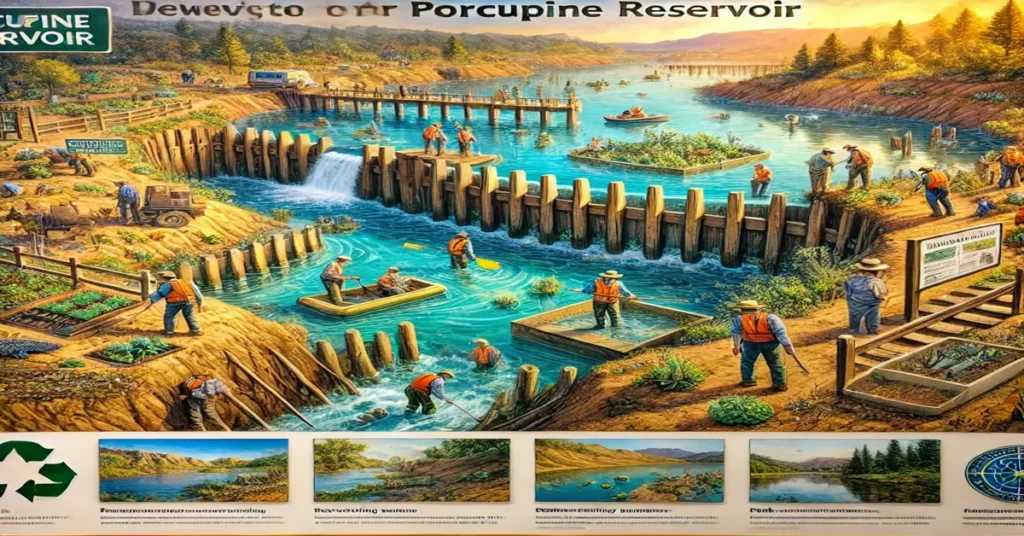
5.1. Water Quality Monitoring
Regular monitoring of water quality is essential for understanding the health of Porcupine Reservoir and identifying potential issues.
- Data Collection: Government agencies and environmental organizations often conduct water quality assessments to measure parameters such as nutrient levels, temperature, and dissolved oxygen. This data helps inform management decisions and conservation strategies.
- Community Involvement: Citizen science initiatives encourage local residents to participate in water quality monitoring efforts. Engaging the community fosters a sense of stewardship and raises awareness about the importance of protecting Porcupine Reservoir.
5.2. Habitat Restoration
Restoration projects aim to improve the health and resilience of Porcupine Reservoir and its surrounding habitats.
- Wetland Restoration: Efforts to restore wetlands can enhance habitat availability for wildlife and improve water quality. Restored wetlands are critical for supporting biodiversity and providing essential ecosystem services.
- Reforestation Projects: Planting native trees and vegetation along the shorelines of Porcupine Reservoir can help stabilize banks, reduce erosion, and improve habitat for aquatic and terrestrial species.
5.3. Sustainable Land Use Practices
Promoting sustainable land use practices around Porcupine Reservoir is essential for minimizing human impact on these ecosystems.
- Best Management Practices (BMPs): Implementing BMPs in agricultural and urban areas can reduce nutrient runoff and minimize pollution. These practices may include buffer strips, cover crops, and proper waste management.
- Zoning Regulations: Local governments can establish zoning regulations that protect and limit development near Porcupine Reservoir. These regulations can help preserve the natural landscape and maintain ecological integrity.
6. Community Engagement and Education
Community involvement is vital for the successful conservation of it. Educating local residents about the importance of this ecosystem can foster a culture of stewardship and promote sustainable practices.
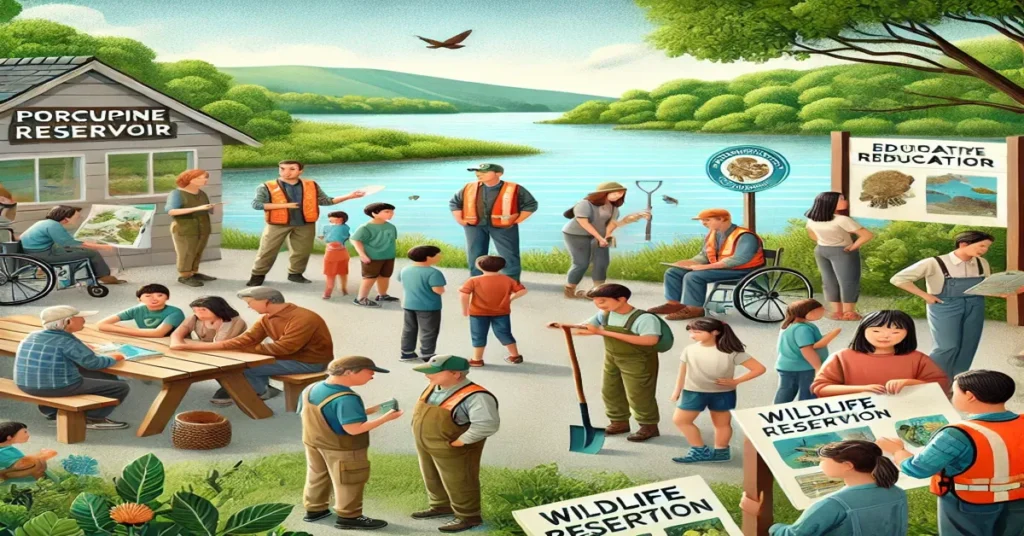
6.1. Educational Programs
Environmental education programs can provide valuable information about Porcupine Reservoir and its ecological significance.
- School Initiatives: Incorporating lessons about local ecosystems into school curricula can help students develop an appreciation for their environment. Field trips to Porcupine Reservoir can offer hands-on learning experiences and encourage students to engage in conservation efforts.
- Community Workshops: Workshops and seminars can educate residents about sustainable practices, water conservation, and the importance of protecting local ecosystems. Engaging the community in discussions about environmental issues can foster a sense of responsibility and inspire action.
6.2. Volunteer Opportunities
Offering volunteer opportunities for community members can help connect people with their local environment and encourage active participation in conservation efforts.
- Clean-Up Events: Organizing clean-up events around it can remove debris and pollutants from the shoreline, improving water quality and enhancing the aesthetic appeal of the area. These events can also help raise awareness about the impact of littering on aquatic ecosystems.
- Restoration Projects: Engaging community members in habitat restoration projects allows them to contribute directly to the health of Porcupine Reservoir. Planting native vegetation, building birdhouses, and restoring wetlands are just a few examples of how volunteers can make a positive impact.
7. The Role of Policy and Governance in Protecting Porcupine Reservoir
Effective policy and governance are essential for the conservation and protection of Porcupine Reservoir. Collaborative approaches involving various stakeholders can enhance the sustainability of this vital ecosystem.

7.1. Regulatory Frameworks
Establishing regulatory frameworks to protect water quality, habitat, and biodiversity is crucial for the health of Porcupine Reservoir.
- Water Quality Standards: Governments can implement water quality standards to regulate pollutant discharges into the reservoir. These regulations help ensure the health of aquatic ecosystems and protect human health.
- Land Use Planning: Zoning regulations can help prevent harmful land use practices near it, minimizing habitat loss and pollution. Effective land use planning promotes sustainable development while safeguarding natural resources.
7.2. Collaborative Governance
Collaborative governance approaches that involve multiple stakeholders can enhance the management of Porcupine Reservoir.
- Cross-Agency Coordination: Coordinated efforts between different government agencies can lead to more effective conservation strategies. Collaboration can streamline regulations, share resources, and enhance the implementation of conservation initiatives.
- Partnerships with Indigenous Communities: Working with Indigenous communities that have deep connections to the land can enhance conservation efforts. Incorporating traditional ecological knowledge into conservation practices can provide valuable insights and promote sustainable management of Porcupine Reservoir.
8. The Cultural Significance of Porcupine Reservoir
Beyond its ecological importance, Porcupine Reservoir holds cultural significance for local communities. Understanding this cultural context enhances our appreciation for the area and emphasizes the need for its protection.

8.1. Recreation and Tourism
Porcupine Reservoir serves as a popular destination for recreational activities, attracting visitors from nearby towns and cities.
- Fishing and Boating: The reservoir is well-known for its fishing opportunities, with many anglers seeking to catch trout and other fish species. Boating and kayaking are also popular activities, allowing visitors to explore the scenic beauty of the lake.
- Camping and Hiking: The surrounding areas offer camping and hiking opportunities, providing visitors with access to stunning landscapes and a chance to connect with nature.
8.2. Historical Significance
The region around Porcupine Reservoir has a rich history, with ties to Indigenous cultures and early settlers.
- Indigenous Heritage: The lands surrounding Porcupine Reservoir are traditional territories for Indigenous peoples, who have deep cultural ties to the land. Their traditional knowledge can inform conservation efforts and promote respect for the environment.
- Early Settlements: The area was also inhabited by early European settlers, who relied on its resources for survival. Understanding the historical context of Porcupine Reservoir adds depth to its cultural significance and highlights the importance of protecting its legacy.
9. Future Directions for Porcupine Reservoir Conservation
As we look toward the future, the conservation of Porcupine Reservoir will depend on continued efforts to address environmental challenges and promote sustainable practices.
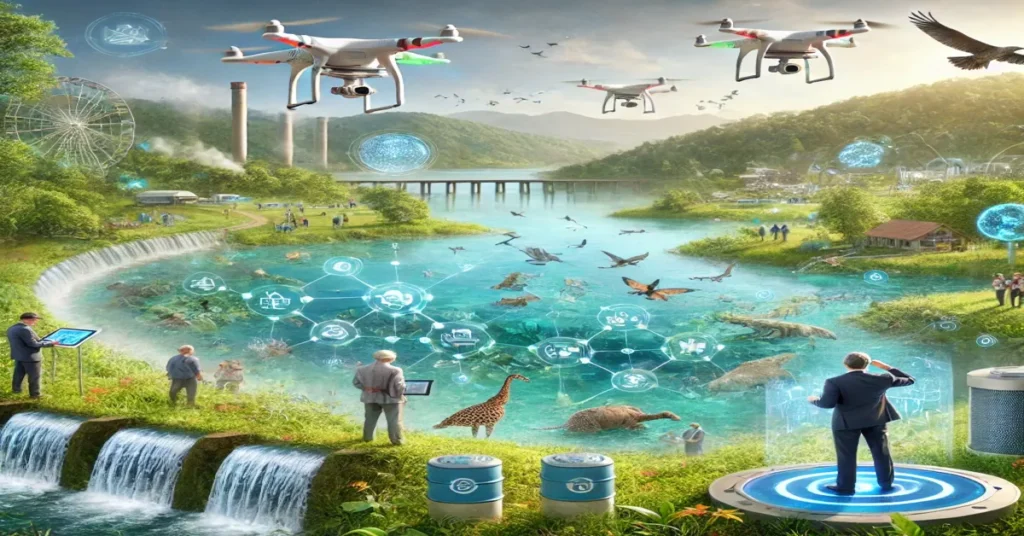
9.1. Climate Adaptation Strategies
Developing and implementing climate adaptation strategies will be critical for enhancing the resilience of Porcupine Reservoir to climate change impacts.
- Habitat Protection: Protecting critical habitats, such as wetlands and forests, can help species adapt to changing conditions. Preserving these ecosystems enhances their ability to provide essential services, including water filtration and carbon sequestration.
- Research and Monitoring: Ongoing research and monitoring of ecological conditions are essential for understanding the impacts of climate change on Porcupine Reservoir. This information can guide adaptive management strategies and inform conservation efforts.
9.2. Community-Led Conservation
Empowering local communities to take an active role in conservation efforts can lead to more sustainable outcomes.
- Citizen Science Initiatives: Encouraging community members to participate in citizen science programs can foster a sense of ownership and responsibility for local ecosystems. Community-led monitoring and data collection can provide valuable information for conservation planning.
- Cultural Engagement: Recognizing and incorporating Indigenous knowledge and cultural practices into conservation strategies can enhance the effectiveness of efforts in Porcupine Reservoir. Engaging with Indigenous communities can lead to more holistic approaches to environmental stewardship.
9.3. Education and Awareness
Increasing public awareness about the ecological significance of Porcupine Reservoir is crucial for fostering a culture of conservation.
- Public Campaigns: Initiatives that promote the importance of Porcupine Reservoir and its ecosystems can build support for conservation efforts. Highlighting success stories and ongoing efforts can motivate individuals and organizations to get involved.
- School Programs: Educational programs that involve local schools can help instill a sense of appreciation for nature in young people. Field trips to Porcupine Reservoir and classroom activities focused on ecology can foster lifelong connections to the environment.
10. Conclusion: The Importance of Protecting Porcupine Reservoir
Porcupine Reservoir is a vital ecological resource that provides essential services and supports a rich tapestry of life. Its unique landscapes, diverse ecosystems, and cultural significance make it imperative to prioritize its conservation and sustainable management. By understanding the challenges it faces and implementing effective strategies, we can ensure that Porcupine Reservoir remains a thriving ecosystem for generations to come.
As we reflect on the beauty and importance of this natural treasure, let us commit to fostering a deeper appreciation for Porcupine Reservoir and taking action to protect the environments that enrich our lives. Through collaboration, education, and advocacy, we can create a sustainable future for Porcupine Reservoir, ensuring that it continues to provide ecological benefits and recreational opportunities for all. Together, we can safeguard this remarkable landscape and the intricate web of life it supports.
Read More: What Smells Bad in the Forest: Uncovering the Odors in Woodland Ecosystems

